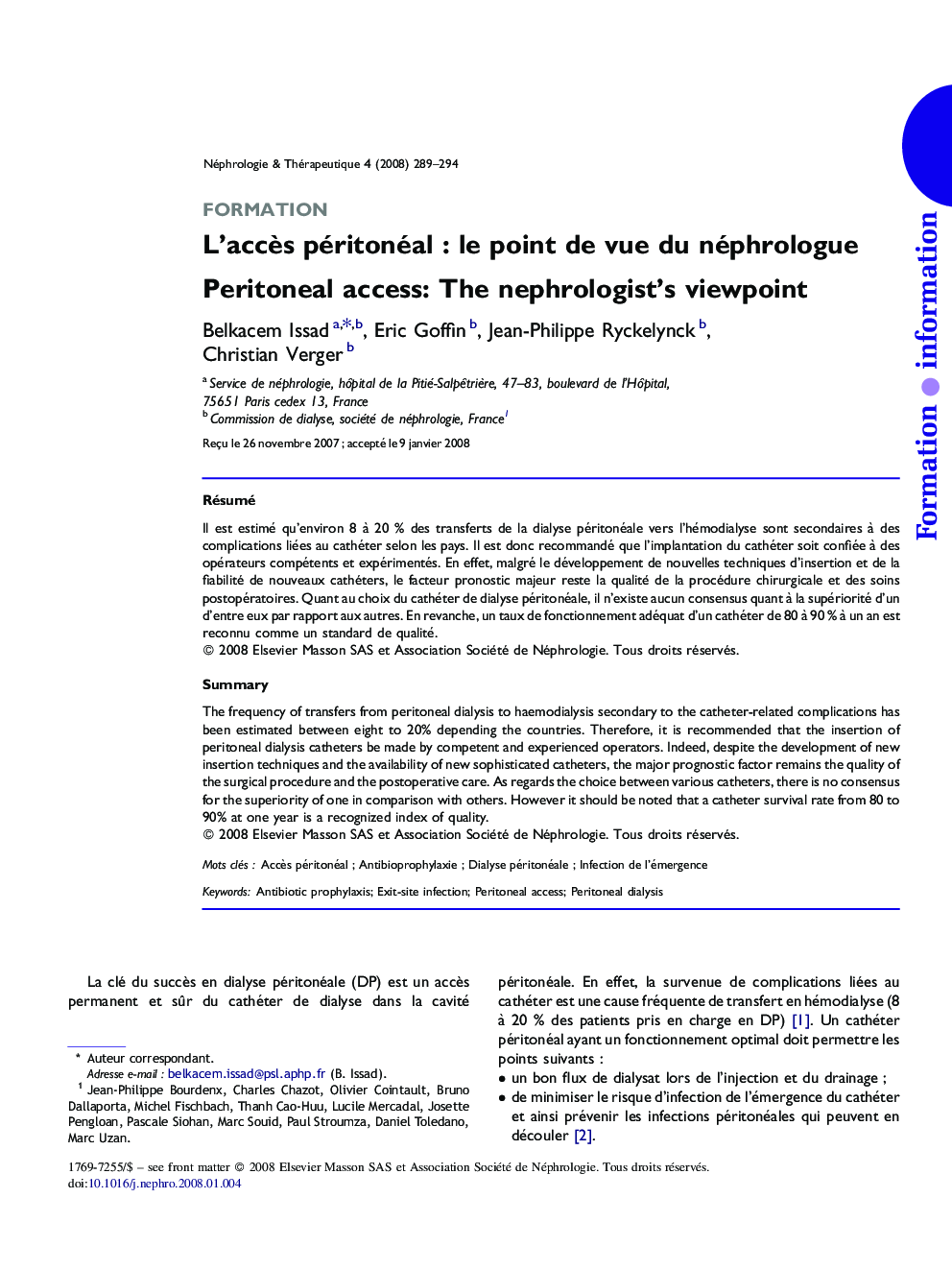| کد مقاله | کد نشریه | سال انتشار | مقاله انگلیسی | نسخه تمام متن |
|---|---|---|---|---|
| 3895292 | 1250158 | 2008 | 6 صفحه PDF | دانلود رایگان |

RésuméIl est estimé qu’environ 8 à 20 % des transferts de la dialyse péritonéale vers l’hémodialyse sont secondaires à des complications liées au cathéter selon les pays. Il est donc recommandé que l’implantation du cathéter soit confiée à des opérateurs compétents et expérimentés. En effet, malgré le développement de nouvelles techniques d’insertion et de la fiabilité de nouveaux cathéters, le facteur pronostic majeur reste la qualité de la procédure chirurgicale et des soins postopératoires. Quant au choix du cathéter de dialyse péritonéale, il n’existe aucun consensus quant à la supériorité d’un d’entre eux par rapport aux autres. En revanche, un taux de fonctionnement adéquat d’un cathéter de 80 à 90 % à un an est reconnu comme un standard de qualité.
SummaryThe frequency of transfers from peritoneal dialysis to haemodialysis secondary to the catheter-related complications has been estimated between eight to 20% depending the countries. Therefore, it is recommended that the insertion of peritoneal dialysis catheters be made by competent and experienced operators. Indeed, despite the development of new insertion techniques and the availability of new sophisticated catheters, the major prognostic factor remains the quality of the surgical procedure and the postoperative care. As regards the choice between various catheters, there is no consensus for the superiority of one in comparison with others. However it should be noted that a catheter survival rate from 80 to 90% at one year is a recognized index of quality.
Journal: Néphrologie & Thérapeutique - Volume 4, Issue 4, July 2008, Pages 289–294